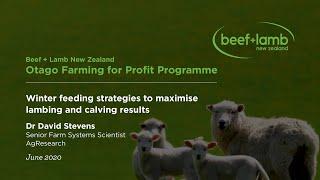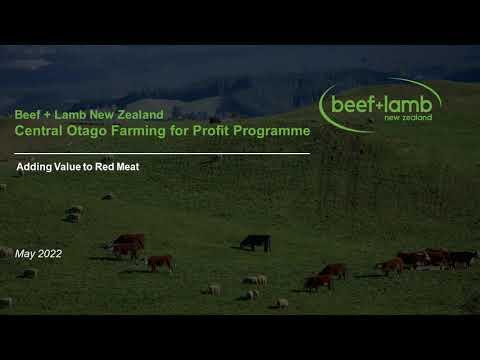Search results
Displaying 531 - 540 results of 1348
- News… of environment policy work of concern to farmers, as there has been a lot happening … of sheep and beef land sold into carbon farming will increase. We will be putting … We know this remains an area of concern for farmers and will continue advocating for more …

- Video… and supplements and answers questions from farmers. … On this Beef + Lamb New Zealand Farming for Profit webinar, AgResearch’s Senior Farm Systems scientist David Stevens shares …
- News… works well for North Canterbury hill country farmers James and Tom Maxwell. …

- Podcast… is Head of Analytics at NZX and a former KPMG farm enterprise specialist. We caught up with … Is change really more significant for farming now than ever before, or does it just … it? Plus, if she won Lotto, would she buy a farm, and if so, what sort? Follow Julia’s …

- Video… Protection Authority and is currently a farmer-elected director of Dairy NZ and … how this translates into greater returns for farmers. Ryan MacArthur (On Farm Sustainability Manager, Silver Fern … B+LNZ Central Otago Farming for Profit – adding value to red meat …
- News… and grew up on his family’s sheep and beef farm. The farm visit was organised by Beef + Lamb New … give Evans an insight into how sheep and beef farms are being affected by carbon farming. … week to witness first-hand the impact carbon farming is having on North Island hill country …

- News… The key thing we want farmers to note is that B+LNZ, along with … COVID-19 traffic light settings. Federated Farmers has also asked for an extension. As soon as we’re able to, we’ll let farmers know the outcome of these …

- Page… have heard the mantra ‘95% of worms on your farm are on pasture’. Learn about the drivers … worms, adults and eggs. Think of your farm as a worm iceberg. Killing worms at the …
- Podcast… cows still have a place on sheep and beef farms, and what that role is; what are the KPI’s that farmers should set for their cows and how … If you farm beef cows, you’ll want to listen to this …
- Industry data… beef 3 livestock numbers 3 wool 3 sheep beef farms 3 global economy 5 economic conditions 5 … states 20 australia 20 lamb sheep prices farmgate 22 lamb mutton production 24 lamb 24 … term increasing awareness around health food safety animal welfare environment climate …

